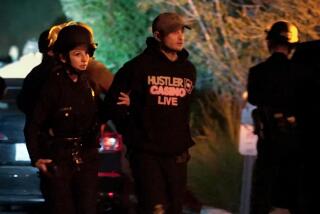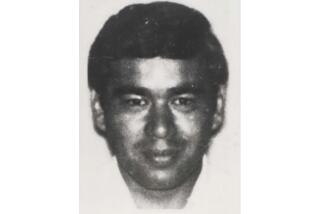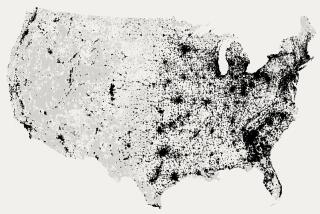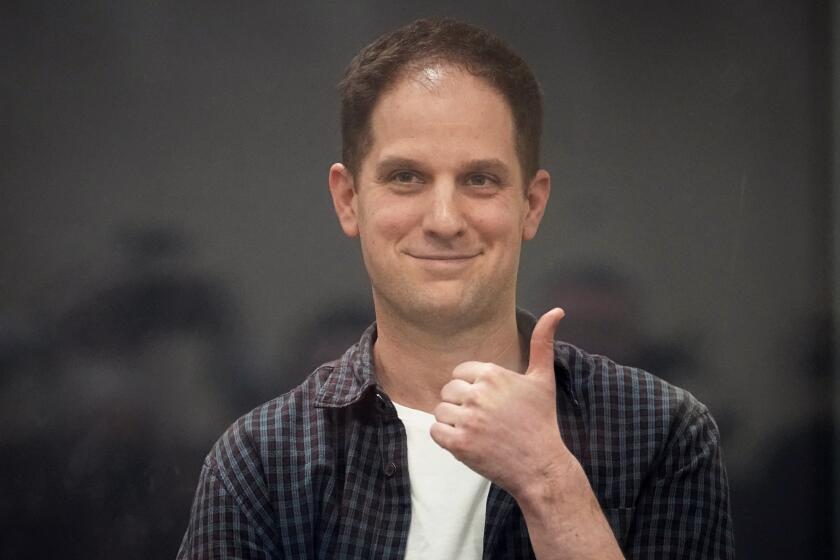Police release more documents connected to Las Vegas mass shooting
Some days, Stephen Paddock left an impression. Like the time he walked into the Sportsman’s Warehouse in St. George, Utah, to buy guns wearing white gloves. Other times, he barely registered in a store clerk’s mind.
But purchase firearms he did — more than 55 of them in the year leading up to Oct. 1, 2017, when he carried out the deadliest mass shooting in U.S. history, killing 58 people at the Route 91 Harvest festival in Las Vegas.
Details of his gun-buying behavior were included in the more than 700 pages of interview summaries, evidence logs, voluntary statements and other information released Wednesday by the Las Vegas Metropolitan Police Department.
It was the 35th — and ostensibly final — release of material related to the investigation of the shooting. Police began releasing hundreds of hours of body camera and fixed videos, thousands of pages of documents and hundreds of 911 calls last year after The Times and other media organizations sued for access and a judge ordered the material be made public.
The documentation shows that for months after the attack, federal, state and local authorities combed through Paddock’s past trying to unearth leads that might explain how and why he conducted the massacre. But last year, the police announced that they might never determine the motive.
In January, the FBI reported that it had reached that conclusion. The police, too. All that was left was piecing together how he did it.
The latest batch of material focused on the victims, including descriptions of what some were wearing when found in the concert venue. The dead were scattered about, and the documents confirmed what the Clark County coroner had determined: All died from gunshot wounds. There were more voluntary statements released as well that included harrowing escapes and firsthand witnesses to graphic carnage.
The newly released documents also showed that some police officers believed they needed more training on how to handle a sniper shooting from a high elevation. Paddock was perched in a suite on the 32nd floor of the Mandalay Bay hotel as he fired on the crowd below.
But a large portion of the material was devoted to tracing Paddock’s footsteps. He was almost universally described as quiet in interviews that federal and state authorities conducted with employees at gun and sporting goods stores in Nevada and Utah.
One employee said he was “reserved” and “wasn’t gregarious.” He noted the white gloves Paddock wore were ones like “that a museum curator would put on if he were handling old firearms.”
A clerk at Guns and Guitars in Mesquite, Nev., described Paddock as well-spoken and intelligent. Paddock told him he would shoot 1,000 rounds from a rifle before having it cleaned.
Investigators traveled to shooting ranges around the area to see if Paddock had shot there. There was a report of him shooting at a public range in Mesquite, where he owned a home with his girlfriend.
In the Las Vegas Police Department’s final report, Paddock was described as a narcissist and a germaphobe. He was a high-stakes video poker player who Sheriff Joe Lombardo had said had been on a two-year losing streak and “was going in the wrong direction.”
The effects of the shooting still reverberate in Las Vegas, with “Vegas Strong” bumper stickers and shirts seen regularly around the city. Gov. Steve Sisolak, a Democrat who was elected in November, referenced the shooting in his State of the State speech. Sisolak was Clark County Commission Chairman at the time of the shooting.
The shooting also was referenced in Carson City as advocates lobbied for the passage of a bill that would require background checks on most private gun sales — the fulfillment of a ballot measure passed by voters in 2016.
The measure, which Sisolak signed into law in February, is to take effect next year.
More to Read
Start your day right
Sign up for Essential California for news, features and recommendations from the L.A. Times and beyond in your inbox six days a week.
You may occasionally receive promotional content from the Los Angeles Times.







